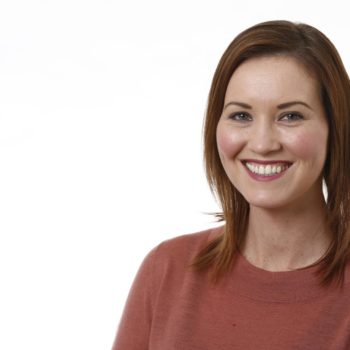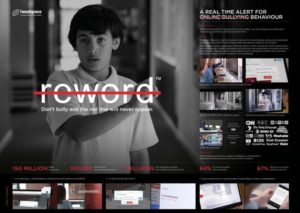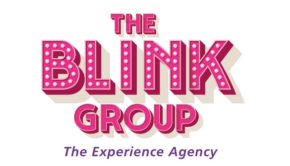The evolution of brands

Anna Doyle, board director, Starcom, examines how marketing teams can achieve cut-through for their brands in a crowded marketplace
28 July 2017
By Anna Doyle, board director, Starcom
We all know how difficult it is for marketers today to gain not only consumer attention, but harder still to engage with them to the point of delivering an action. A recurring theme across all brand categories at the Cannes Lions Festival for Creativity 2017 was humanity and how brands that win the consumer, and the bottom line, are brands that trade in emotion, not information. I’m not sure however that at Starcom we would fully agree with such a statement but it certainly has its merits. It might be better to say brands that trade in emotion, rather than just information, win hearts, minds and bottom lines! According to findings in 2017’s ‘Marketing Multiplied’ Authored by economists Chris Johns and Jim Power and Alan Cox, CEO of Core Media, it would seem reasonable that “effective advertising can be both persuasive and informative”.
Connecting with consumers on a basic human level should be the simplest of tasks, but it’s not. It is the most difficult of tasks and it has become the holy grail for marketers.
Insight driven marketing, data lead marketing and precision targeting are designed to achieve a simple connection with a consumer in the right space at the right time that delivers change. It means a change in behaviour or a change in their decision-making journey. Either way the desired outcome is to influence and inform, so that the brand that is trying to connect is more top-of-mind than their competitors.
However, here’s the real problem – once a brand connects with consumer mindset, how do they then get them to cross the line? Media and data can deliver to a point. They can bring the consumer and the brand closer together right to the point of consideration, but a gap remains between consideration and consumption and in brand marketing terms that can take a while. This is where the creative comes to life. Creative that drives action through compelling emotion is ultimately what closes that gap but in an era of rapid technological change, a desire for instant gratification and a new culture of brand scepticism, the struggle for marketing teams in Ireland to cut through intensifies.
Creativity also means creativity in media, not just the big idea. But they have to work together. The big idea must allow for media to absorb it and transform it into something meaningful for the consumer that they will latch onto, share and talk about because they perceive it as worthwhile. This is what Peter Field in his latest research refers to as ‘Fame’ campaigns, adopting ‘social’ causes as platforms and clients that exploit fame get “twice the efficiency of spend as those simply buying awareness” (Field, 2016. The Link Between Creativity and Effectiveness). The trick is in discovering the ‘big idea’ that is so disruptive yet agile enough to deliver across all advertising disciplines. This is how brands have had to evolve.

Samsung’s Pocket Patrol App displays exact locations of live beach dangers
Behavioural economist Professor Dan Ariely spoke at the Cannes Lions Festival around the fantasy of decision-making, and why we keep getting it wrong. His thought process taken from learnings from his latest research, revealed how hidden details impact our daily decisions in ways we don’t understand – why do we text while driving? Why do we click certain links? Every day consumers make thousands of decisions and believe they are making conscious decisions based on information they have absorbed. But they don’t. Professor Ariely prescribes that we are largely influenced by irrational factors of which we are not aware and debates the shortcomings of rational information as a means of influencing consumers’ behaviour and decision-making. So, this brings us back to that key statement earlier and appears to agree that we “trade in emotion not information”.
 We are witnessing the entrance of a whole new suite of advertisers, which were once considered too boring to do emotive advertising and too utility-based to derive any form of creative engagement, such as Ambjua Cement Publicis India, or Samsung’s Pocket Patrol App which displays exact locations of live beach dangers.
We are witnessing the entrance of a whole new suite of advertisers, which were once considered too boring to do emotive advertising and too utility-based to derive any form of creative engagement, such as Ambjua Cement Publicis India, or Samsung’s Pocket Patrol App which displays exact locations of live beach dangers.
Another good example is Headspace Australia’s ‘Reword’ digital campaign that effectively targeted cyber bullying to kids using Google AdWords to literally transform hateful messages by rewording them so that the words were not hurtful or insulting.
 Whilst more and more brands are emerging with hugely emotive advertising it is largely FMCGs that have lead the way in this evolution of brand advertising.
Whilst more and more brands are emerging with hugely emotive advertising it is largely FMCGs that have lead the way in this evolution of brand advertising.
From SuperValu’s ‘Good Food Karma’ campaign encouraging food-sharing on social media to Heineken Ireland’s Orchard Thieves ‘Be Bold’ campaign which focuses more on a contemporary, urban take on cider, daring them to be bold in their pursuit of enjoyment to McDonald’s ‘#GoodToKnow’ campaign using influencer marketing to turn a negative assumption about how their chicken nuggets are made, into a positive brand story showing the world how they are made using transparency to win hearts and minds, not to mention Coca-Cola’s infamous ‘Share a Coke’ providing consumers with a chance to share a Coke with friends and family.
The list of examples from FMCG brands both locally and around the world is endless and we are seeing a surge in telecommunications and basic utility brands following suit.
So, what does the future hold for brand marketing? With increased investment in MarTech (27% of marketing budgets in the US & UK invested in marketing technology according to Marketing Multiplied, 2017), ‘machine learning’ being the current buzzword around ad-land and Artificial Intelligence not just around the corner but already here, the future has a lot in store for brand evolution and more so informed brand evolution.
However, at the heart of it all, brands cannot forget that we must continue trade in emotion and not be confined to the lines of traditional advertising. Brands need to invest wisely in all of their agencies and simply because one strand specialises in targeting, another in delivering visual identity and another in delivering brand tone doesn’t mean agencies can’t all layer together to build a better output that generates success both for the brand and for the consumer. After all, what we are trying to do with brands is simply tell a human story so it will connect with humans.
Written by Anna Doyle, Board Director of Starcom, part of the Core Media delegation who attended the Cannes Lions Festival in June 2017.
About Core Media:
Core Media is Ireland’s largest marketing communications group. The business consists of nine individual agencies – Mediavest, Mediaworks, Starcom, ZenithOptimedia, Core Knowledge, Engage Communications, Livewire, Ignite and Radical.
Core Media has been voted Agency Network of the Year for the last four years at the Media Awards and the company was also voted one of the top three workplaces in Ireland by the Great Place to Work Institute for the last four years.
About Cannes Lions Festival:
The Cannes Lions Festival is an eight-day long international festival of creative thinking, digital innovation, education and networking. The 2017 festival took place from June 17-24.
Attended by nearly 20,000 delegates from all over the world, it is the benchmark for the very best in global creativity. Dame Helen Mirren, Sir Ian McKellen, Sheryl Sandberg, Halle Berry and Demi Lovato were all in attendance this year.
For further details, check out www.coremedia.ie. #CoreAtCannes @CoremediaIRL @TheAAI



 Print
Print




Fans 0
Followers